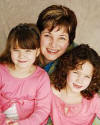Mar 06 2009
Let’s Get Ready For Kindergarten Roundup!
Education needs to change, and it needs to start at preschool and Kindergarten Roundup. Kindergarten Roundup is happening all cross the country in February. Schools say that they are testing our children at Kindergarten Roundup. They are not testing Kindergarten concepts but are testing fine motor skills to determine if there are any learning issues, but parents are not aware of that!! Kindergarten roundup is where parents should be told about the Kindergarten assessment testing on the Kindergarten curriculum during the first few weeks of school in fall.
This is not happening! WHY?
Milwaukee Public Schools has a billion dollar budget and spent $20 million dollars on consultants last year. That money is not filtering into the classroom. I could walk into any classroom at MPS and ask the students what is wrong with education and I am sure they would nail it. I asked my second- and fourth-grader that same question about their public school in Random Lake, WI and here is what they said:
- Mom, in fourth-grade, we only get one recess for 20 minutes…and they wonder why we are obese. Note: Our school just received a huge grant to combat childhood obesity at our school.
- It was 60 degrees outside last week, and on that day, our elementary principal made an announcement that if you did not wear your heavy winter jacket with hats and gloves you would be allowed to play outside but had to stay against the wall outside. My kids had to stand against the wall because I put them in a shirt with a heavy long sleeved sweatshirt under a sleeveless down jacket, no hat or gloves. I personally did not wear a jacket that day because it was 60. My kids were not allowed to run around on that day and half of their classmates had to stand against the wall because their parents dressed them inappropriately for the weather. Are you kidding me? It was 60!
- Mom, we only have 10 minutes to eat. This is a problem that comes up during my workshops. Many teachers and parents complain that we have a problem with our allotted time for school lunch. Note to educators, it takes 10-15 minutes to get through the line, leaving only 10 minutes to eat and that is simply not long enough and think of all the food that is being wasted!!!
- State testing begins in third-grade. My daughter tells me in fourth-grade, for the entire month of October she is talking a test twice a day. No one ever goes through the test with her to tell her if her answer is right or wrong. So, she wants to know how these tests help her learn, especially since they ask the same question over and over and she isn’t sure if she is answering it correctly over and over. If she takes a spelling test, she gets the answers back so she learns from her mistake! Her question is, how is she learning from all these tests? Good question, Heidi! Mom does not know the answer! Do you?
- In Wisconsin, we have Sage Funding, meaning schools get money from the state to guarantee that we have a 15-to-1 student/teacher ratio. Unfortunately, the money was given to schools but schools were not enforcing the sage requirements until last year. Might this be happening in Illinois?
- Education will never change until we start empowering parents and kids into the process. Case Study: Harvard, Illinois, Washington Elementary School. I did a presentation last year to 40 families of which 38 could NOT speak English. With the help of one of their bilingual Kindergarten teachers, we shared with the kids and the parents what they would need to know for Kindergarten and the school could see a definite improvement in this group. Some of these families even joined the PTO and became active in their school. If you teach a child to wear their seat belt they will teach everyone or remind mom when she is not wearing it to buckle up – so if you teach a child what they need to know, like their shapes and colors or count to 100, they will keep reminding their to parents over and over that they need to practice!! It’s about empowering parents, kids and teachers to all work together to embrace education!
Education needs to change and this story needs to be told! Please share it with all your friends. How would you change education?



